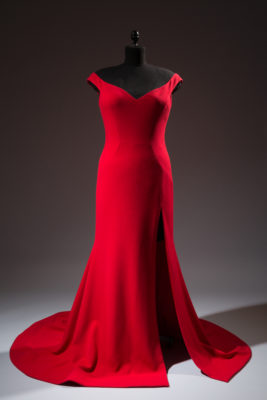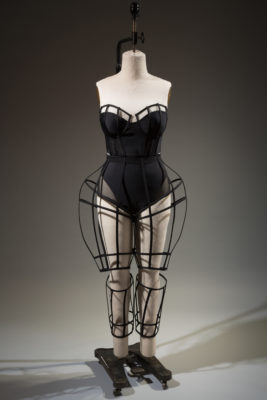Diversity and inclusiveness are a part of FIT’s mission. What follows is the third in a three-part series covering events at FIT—a panel titled Inclusive Beauty with BuzzFeed; the Jay and Patty Baker School of Business and Technology’s Dean’s Forum called The Business of Curves; and an exhibition, The Body: Fashion and Physique, at The Museum at FIT. Each installment of the series features a Q&A with the moderator, the participants, or, in the case of the exhibition, the curator.

On Tuesday, December 5, The Museum at FIT opens The Body: Fashion and Physique, an exhibition that examines the complex history of the “ideal” body in fashion and considers the relationship between the fashion industry and body politics from the 18th century to the present. Newsroom sat down with curator Emma McClendon to talk about the exhibition.
Newsroom: The “fashionable,” or “ideal,” body is a cultural construct that has shifted throughout history. Where are we with regard to that “ideal” now? Where are we headed?
Emma McClendon: I think that increasingly there is no single ideal fashionable body. Most runway shows and magazines continue to feature primarily white, thin, young models, but the internet and social media have opened up the industry, giving bloggers and consumers a much more powerful voice to challenge normative body ideals and expand our notion of what a fashionable body is. Several young designers, including Becca McCharen-Tran of Chromat and Christian Siriano, are using their brands to promote a much more inclusive view of the fashionable body. I hope that other brands will join them so that we can continue to expand the fashion industry to make it much more inclusive.
What impact do you want this exhibition to have on the body positivity conversation in fashion in the broader sense?

I hope that the exhibition will help students, industry insiders, and the general public better understand how the fashion industry has treated the body, particularly the female body, throughout history in terms of both the design of actual garments and the way fashion imagery and ideals are disseminated. I hope we can use this knowledge to look to the future and figure out ways to change the current system of making and selling clothes, and make the industry more inclusive at all levels.
What inspired you to do an exhibition on this topic at this particular moment?
I have always been interested in the relationship between fashion and the body and the psychological impact it can have within broader culture. I began planning this exhibition almost two years ago. While some of the current trends in body positivity were building at that point, it has been wonderful to see how that conversation has grown and blossomed over the last couple of years. I hope that this exhibition will contribute to that discourse and provide historical context to the current debate on body diversity and inclusivity in fashion.
People’s image of their own bodies is such a personal—and emotional—subject. What do you hope visitors take away from this show?
Everyone has had the experience of going into a store and trying on an item of clothing only to find that it doesn’t fit. During these moments so many of us feel like something is wrong with our body—that the clothes are right and our bodies are wrong. One takeaway I hope visitors will have from the show is that their bodies are right and it’s the current fashion system that is flawed. Only by acknowledging that the system is flawed can we begin to fix it.
